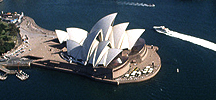UNSW to be investigated over 'preliminary' research misconduct inquiry that has taken two years
The Australian Research Integrity Committee (ARIC) is set to investigate UNSW's handling of an alleged case of research misconduct.
The allegations were first brought to the attention of UNSW in September 2021 by two research integrity experts. They involve scientists from the University's Centre for Healthy Brain Ageing (CHeBA).
But more than two years later, UNSW has not completed its preliminary assessment of the allegations, the first step in determining if a full investigation is required.
ARIC was founded in 2011 to review how government-funded research institutions investigate these kinds of allegations — specifically, potential breaches of the Australian Code for the Responsible Conduct of Research.
Under that Code, institutions must ensure their processes for investigating potential breaches are "timely, effective and in accord with procedural fairness".
The ABC can reveal ARIC's review of the UNSW case will focus on "whether the time taken to complete the preliminary assessment, considering all circumstances, could prejudice the findings or fairness of this assessment, or impose hardship on relevant persons involved".
The ongoing assessment of two-year-old allegations highlights a pernicious problem with Australia's research sector: universities investigate research misconduct cases in-house and behind closed doors.
Experts say self-regulation is rife with conflict of interests and, in recent years, its failings have led to increasingly noisy calls to establish an independent watchdog.
Questions asked by image sleuths
ARIC's review is centred on a UNSW investigation into brain research that began in 2021.
In September of that year, questions about more than a dozen papers co-authored by researchers at UNSW's CHeBA and several other institutions first appeared on PubPeer, a website that allows scientists and the public to anonymously discuss scientific articles.
Several "image sleuths" had studied the papers and claimed to have found experimental images with signs of duplication, including photos that appeared to have been stretched or flipped and used to represent different experimental results.
Soon after the allegations of image duplication appeared on PubPeer, David Vaux, retired deputy director of the Walter & Eliza Hall Institute of Medical Research and a research integrity specialist, and Simon Gandevia, the deputy director of Neuroscience Research Australia, emailed UNSW and raised their concerns.

Professor David Vaux at the Walter and Eliza Hall Institute. He has retired but plays an active role in research integrity cases.(ABC News: Jeremy Story Carter)
Nine of the papers flagged for investigation were led by Dr Nady Braidy, who leads CHeBA's Brain and Ageing Lab. They also featured collaborators from Macquarie University, the University of Sydney and institutions in Oman, Chile and India.
Professors Vaux and Gandevia suggested it could be a case of "falsification or fabrication of data" and called for an independent, multi-person, external investigation to establish whether there had been any fabrication of data and, if so, which researchers might be responsible.
Those allegations prompted UNSW to begin its preliminary assessment, a process designed to determine whether the allegations — if proven — would constitute breaches of the Code. Given the seriousness of the allegations, Professor Vaux noted, such an assessment should have proceeded quickly.
"No-one would argue that, if proven, these would be serious breaches of the Code," he said.
In October this year, after fresh concerns were raised on PubPeer, the ABC approached UNSW for comment on the allegations and asked why the preliminary assessment had taken so long.
A university spokesperson stated the case was "complex, covering multiple institutions, investigators, and publications" and noted the university "is as eager to resolve the matter as the many stakeholders are" and "additional resourcing" had been allocated to the case in recent months.
"It is vital to the integrity of all investigations that they are conducted in full before a conclusion is reached," they said.
Correspondence seen by the ABC suggests the preliminary assessment will not be completed before March 2024.
A complex case
Twelve of the articles with alleged image anomalies featured co-author Gilles J. Guillemin, a French neuroscientist who worked as a professor at Macquarie University until March 2023.
In 2022, Professor Guillemin took leave as Macquarie conducted its own in-house preliminary assessment. A university spokesperson told the ABC Macquarie's preliminary assessment has since been completed.
"Several allegations were dismissed but in other instances, corrective actions were developed and are being implemented," they said.
"These actions include author or institutional requests to journals for corrigenda or retractions, and institutional referrals for investigation."

Macquare University also conducted an in-house investigation in regard to the misconduct allegations.(Getty Images: Kokkai Ng)
So far, two papers co-authored by Professor Guillemin have been retracted — which means they've been formally withdrawn by the journals that published them. In both cases, he agreed with the retractions. One of the retracted papers was led by Dr Braidy.
Professor Guillemin denied any wrongdoing regarding the alleged image anomalies in the scientific publications. He told the ABC he could not comment on specifics but had fully complied with Macquarie University and UNSW's investigations.
Dr Braidy did not respond to multiple ABC requests for comment.
Perminder Sachdev, UNSW Scientia Professor and co-founder of CHeBA, was also a co-author on eight of the papers flagged on PubPeer. He told the ABC his role in those papers "has been to comment on and contribute to the clinical implications of the work".
Professor Sachdev said "some of the issues have been identified as mistakes by junior investigators that have been corrected". Of the eight papers co-authored by Sachdev, one received a correction – however, it did not relate to allegations of image manipulation.
In emailed correspondence, he said the UNSW investigation had been "very slow in its progress" and the "involvement of other universities" had slowed it down further.
"Since the matter is already in the public domain … I think it would be fair and appropriate for the preliminary investigation to be completed," Professor Sachdev said.
Self-regulation and timely investigations
Particularly relevant to UNSW's investigation is section R11 of the Research Code, which states institutions must "ensure that the process for managing and investigating concerns or complaints about potential breaches of the Code is timely, effective and in accord with procedural fairness."
So is a two-year preliminary assessment "timely"?
Mike Calford, an emeritus professor at Australian National University and chair of the committee that updated the Code in 2018, defended the current system of self-regulation.
He said preliminary assessment times were highly variable, with one complex case in the past taking about 18 months to complete, after two preliminary investigation attempts failed because of a lack of expertise.
"If there are difficulties with the complexity, difficulty getting the right expertise or you find out more as you're going which requires further investigation or input, then I can see things can take a long time," he said.
A lack of teeth
But critics argue that this self-regulation model has often been inefficient, opaque and vulnerable to conflicts of interest. Universities are also rarely equipped with specialists who are qualified to adequately assess misconduct claims.
Kristen Scicluna, a postdoctoral research fellow at public policy think tank the Australia Institute, recently published two discussion papers on the need for change.
"Research institutions have a vested interest in maintaining the ineffective self-regulation model," she said.
Dr Scicluna argues the way institutions investigate allegations of misconduct "falls well short of global standards" and an independent research integrity watchdog is required.
Professor Vaux has long championed the call for an independent research integrity body, believing the current system inadequate to sufficiently investigate allegations of misconduct.
In instances where universities may have breached their responsibilities under the Research Code, ARIC can step in. But Professor Vaux said even if ARIC makes strong recommendations, nobody is obliged to implement them.
"The Australian system lacks teeth," Professor Vaux said.
He's also concerned by the inherent conflicts of interest that arise when universities investigate their own researchers.
In recent months, the chorus of voices asking for change has grown louder.
For instance, Bruce Lander, former South Australian Independent Commissioner Against Corruption, recently completed an inquiry into a case of misconduct at the QIMR Berghofer Institute in Queensland. In a report released to the Sydney Morning Herald, he noted there is a real disincentive for institutions to investigate their own researchers.
Calls for an independent watchdog
A number of academics the ABC spoke to believe the current system appears ill-equipped to deal with an increase in research misconduct cases.
Dr Scicluna hopes an independent watchdog may be the answer.
"We need an independent investigatory body to … ensure public trust in Australian research," she said.
Professor Calford has more confidence in the current system, suggesting it provides a "very, very strong" impetus for universities and institutions to comply with the Code — breaches can see federal funding, via the NHMRC or the ARC, paused or withdrawn until an investigation is complete.
However, that funding is not necessarily paused during a preliminary assessment under UNSW or NHMRC guidelines.
When asked if NHMRC funding had been paused during the preliminary assessment, a spokesperson from UNSW said "the ARC, NHMRC and relevant journals had been appropriately advised and updated in accordance with their respective research integrity policies."
The NHMRC told the ABC it "does not comment on individual research integrity matters for privacy reasons and to preserve procedural fairness and the integrity of investigations".

Former head of South Australia's ICAC, Bruce Lander, sees a "real disincentive" for institutions to investigate themselves.(ABC News)
Meanwhile, the consequences for breaching the Code have failed to stem a rising tide of retractions. More than 650 academic papers with Australian authors have been retracted in the past 20 years -- and 37 per cent of those have come in the past four years, according to the Retraction Watch database.
Even if this is only because of increased scrutiny and websites like PubPeer shining a light on inconsistencies in scientific publications, the workload for universities and institutions could continue to rise.
This phenomenon has already had an impact on ARIC's workload.
According to its annual report, ARIC received eight requests in 2020-21 and 12 in 2022-23. It also noted that in the past year, five reviews were finalised and in three of those "the institution took an unreasonably long time to conduct its preliminary assessment and/or investigation".
It also has 11 reviews ongoing; two years ago, it had five.
"The growing number of research misconduct controversies shows that self-regulation of Australia's research sector has failed," Dr Scicluna said.








